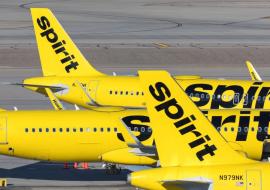Meetings Industry Struggles to Shake Off the AIG Effect
Back in July, Phoenix was in a frenzy, and the news media were circling like a pack of hungry coyotes. The cause of all this consternation would have gone unnoticed in any other era: The Social Security Administration had sponsored a three-day training conference for employees at the upscale Arizona Biltmore Resort & Spa in Phoenix, at a reported cost to taxpayers of $700,000 to $750,000.
The schedule included entertainment by dancers and use of the casino and resort facilities. Employees were coming from as far as American Samoa and Guam. Those facts left a scent of blood in the air around Phoenix at a time when meetings and incentives are often demonized as employer- or taxpayer-funded vacations.
But there were other, mitigating facts that reporters overlooked, like the tab covered about 700 participants, for an average of roughly $1,000 per person, that most participants were arriving from the Western U.S., which meant that travel costs were relatively low, and that the casino option was cost-free to the government.
Nonetheless, Fox News, in its initial report, and ABC covered the event with eyebrows raised. ABC called the price tag “a tough pill to swallow for taxpayers.”
The House Ways and Means Committee asked for more information about the costs of the conference, while the Senate Finance Committee asked for an audit of Social Security’s contracting process.
There was some effort at balance even in the initial coverage, with comments by a Social Security representative about the bidding process and the value of conducting training at a single site. Some reports quoted the local convention and visitors bureau about the value of the business to Arizona and its importance to local employment.
Local coverage was a bit more responsible, according to Steve Moore, president and CEO of the Greater Phoenix Convention & Visitors Bureau, who said the local Fox affiliate and the Arizona Republic newspaper offered balanced coverage.
However, the bigger question in cases such as this isn’t whether coverage was fair, but why it occurred at all.
According to statistics provided by StarCite, an electronic marketplace where meetings planners shop for event venues and services, requests for proposals for meetings in Phoenix-Scottsdale were off 44 percent in the first six months of this year, and some portion of that sharp drop was because the area is known as a vacation spot.
Moore figures Phoenix and some other Western sites also suffered in this era, because getting to them from population centers too often involves long-haul flights.
The July timing of the Phoenix gotcha game is a reminder that the so-called AIG effect lingers, even if muted considerably from its hysteria phase early this year.
As Kevin Maguire, president and CEO of the National Business Travel Association, commented: “The AIG effect is an umbrella that won’t go away.”
Moore also thinks this kind of media coverage will be around “awhile longer … in this 24-hour-news society.”
Meanwhile, most observers agree that the events of the past year will leave permanent scars well after the economy recovers and the government bailouts are history.
The phenomenon popularly known as the AIG effect can be defined succinctly as a backlash against any business travel that is seen as overly luxurious or just plain too much fun to be considered work-related.
It was born when an AIG subsidiary spent more than $400,000 on an incentive trip for 100 or so top-performing independent insurance agents at the St. Regis Resort in Monarch Beach, Calif., in late September, a week after AIG took its first billions in bailout funds.
The insurance agents were rewarded with a week at an upscale resort, a motivator well understood in the incentive travel business and in many sales organizations. However, the timing was terrible: It came to light just as AIG was about to take a second helping at the government trough.
But the brouhaha over the AIG event was minor compared with early 2009, when indignation spread beyond banks receiving Troubled Asset Relief Program money to just about any kind of meeting by any corporation.
If the worst AIG effect is a 10 on a one-to-10 scale, the effect today rates a six or seven, Dow said. Negative news reports have been triggered by tips from disgruntled resort staff and unhappy personnel who didn’t qualify for their company trips. And, Dow said, “we had media in hotels looking at meeting boards.”
When the huffing-and-puffing quotient was highest, the NBTA surveyed corporate travel managers, mostly to learn about the effects of a weakened economy on business travel. However, the group’s online survey in February and March also asked questions about perceptions.
Very few respondents acknowledged a drop in meeting or purchasing patterns based solely on worries about public perceptions. Only 5 percent said that meetings requiring travel had decreased in the previous four months due to perceptions, but another 37.8 percent pegged the decline to perceptions and the economy, while 42.9 percent said the decrease was due to the economy alone.
Among those whose firms arrange incentives or other employee recognition events, 6.4 percent said numbers were down due to perceptions, while 25.6 percent blamed a combination of perceptions and the economy. Again, a larger portion, 38.5 percent, cited the economy as the sole culprit.
In its ongoing research, Meeting Professionals International has in essence tracked the rise and decline of the AIG effect. Every two months, a panel of meetings planners is asked what single trend they believe will most affect meetings and events in the coming six months.
In December, 6 percent cited “poor perceptions/coverage of meetings”; in February, that factor went to the top of the list, cited by 26 percent of respondents. But in April, it dropped to 17 percent, and by June, it had slid to 12 percent.
Another top factor in February was concern that government would intervene in the meetings and events business, cited by 11 percent. That concern had largely dissipated by April, cited by 3 percent then and by 2 percent in June.
Congress and President Obama have been vocal in their criticism of perceived wasteful spending of TARP funds, whether on corporate jets or high-end incentive trips. The rhetoric added fuel to a media frenzy, particularly during the first months of this year, that not only went well beyond TARP recipients but even influenced travel purchasing by the government itself.
Lawmakers can scorn waste, but they can be just as indignant when the rhetoric hurts their home districts. Senate Majority Leader Harry Reid (D-Nev.) sought and obtained assurances from the White House that it is not federal policy to blacklist specific destinations.














